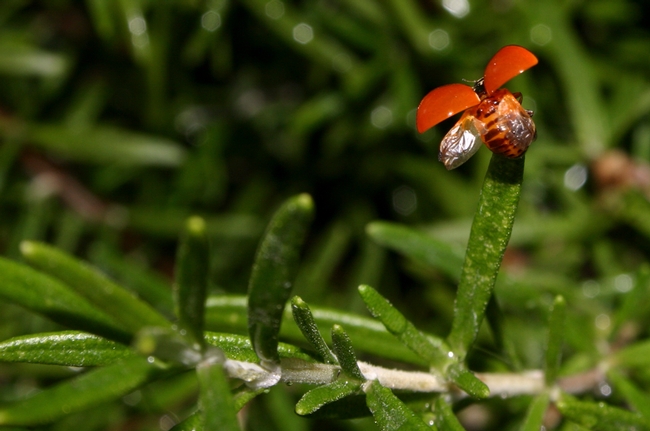Drought Tolerant, Native, and Mediterranean Plants Workshop
By Andrea Peck UCCE Master Gardener
With fall just around the corner, you may be thinking crunchy leaf-mulch and pumpkins, but did you know that this is the best time to plant? If you've been tinkering with the idea of incorporating drought tolerant plants into your landscape, now is a great time. The San Luis Obispo Master Gardeners are holding their monthly Advice to Grow By workshop this Saturday. This discussion will focus on drought tolerant, native, and Mediterranean plants. The speakers will begin with commonly known plants before diverging into more unusual, up-and-coming fare. I've also heard through the grapevine that some of the latest drought tolerant plants may be making an appearance.
Despite predictions that we are going to have a “Godzilla” rain this year, it's important to remember that water is a scarce commodity, particularly when it comes to landscaping. Utilizing drought tolerant plants is an important way to save water while still maintaining an attractive garden. Known for their ability to maintain vigor despite dry conditions, drought tolerant plants are also known for their adaptability and ability to thrive with minimal care.
Natives are plants that are “naturally” found in our area. Often, they are able to accommodate and thrive in the poorest of soils with no need for fertilizing. This workshop will discuss different types of native plants that grow best in various microclimates of San Luis Obispo. Mediterranean plants are those native to one of the 5 Mediterranean climate zones – California, southern and western Australia central Chile, the Cape region of South Africa and the Mediterranean basin which includes the exotic locales of France, Spain, Italy, Greece, and Morocco. These regions share similar climates; therefore, Mediterranean plants fit right in with California natives and other drought tolerant plants.
Many drought tolerant plants attract pollinators, so be prepared to welcome visitors to your garden. Flitting amongst the yellow yarrow, purple lavender or stalwart rosemary you may see butterflies, hummingbirds, and honeybees.
Prepare for the weather, whatever it may be. Bring sunscreen, a comfortable chair, water and a hat. Who knows, maybe an umbrella and galoshes will be necessary. The workshop runs from 10:00 a.m. to noon in the Garden of the Seven Sisters, located at 2156 Sierra Way, San Luis Obispo.
